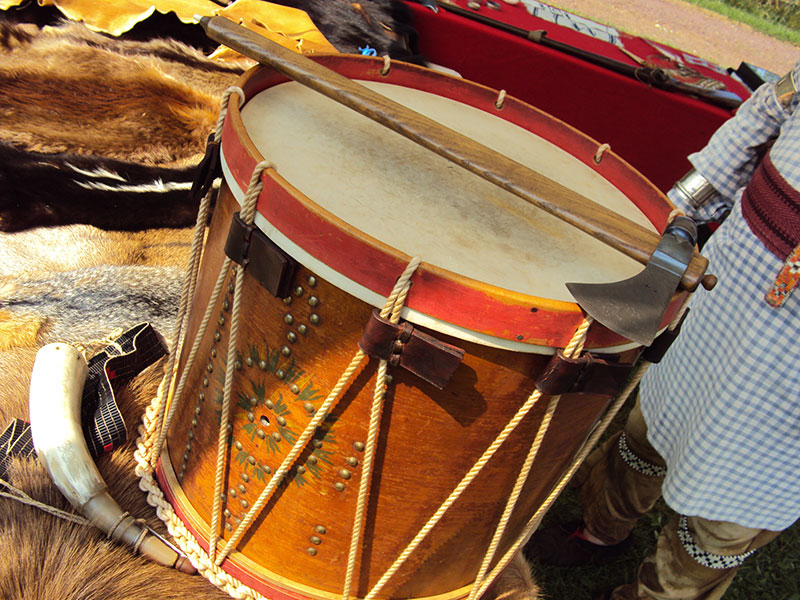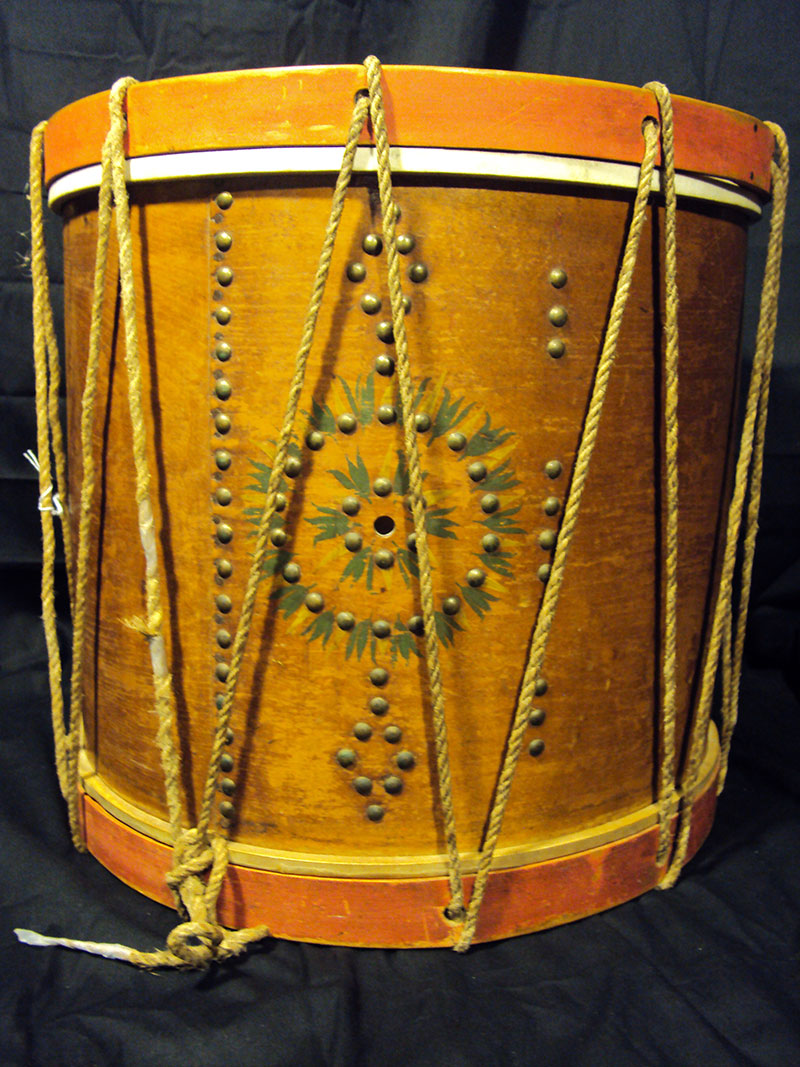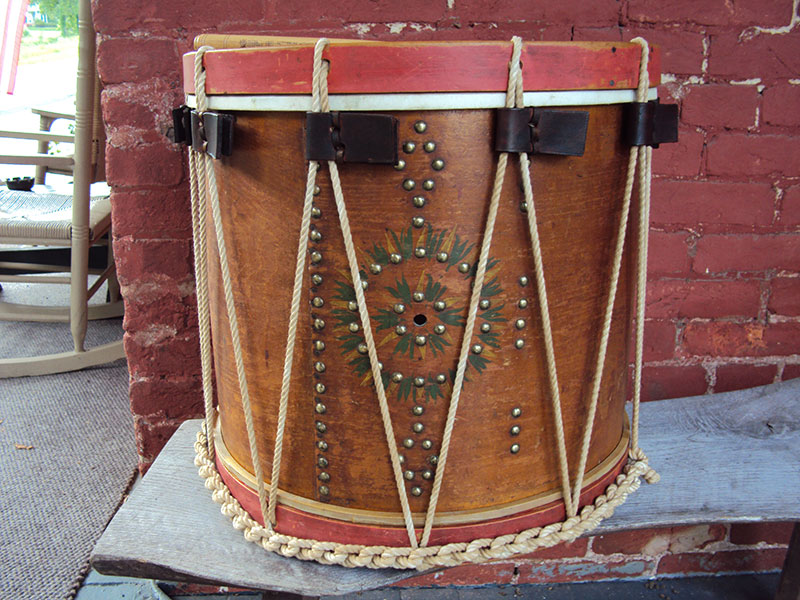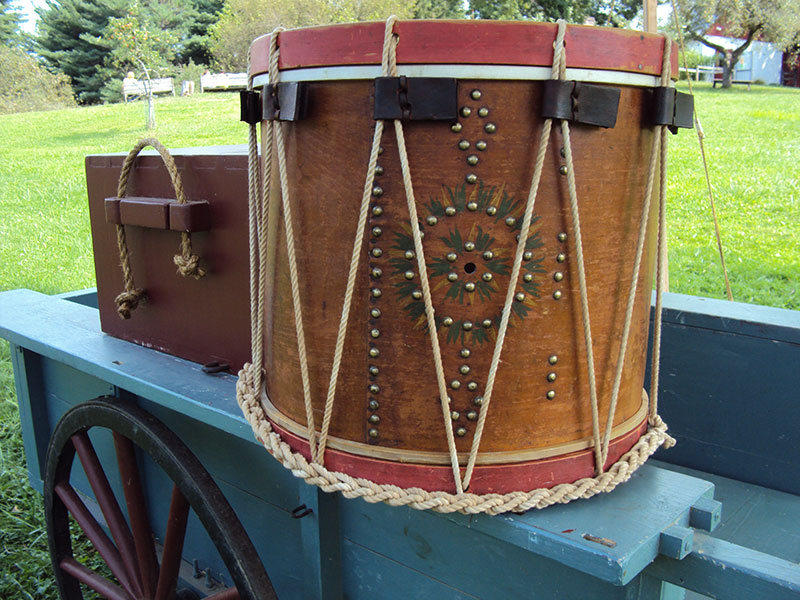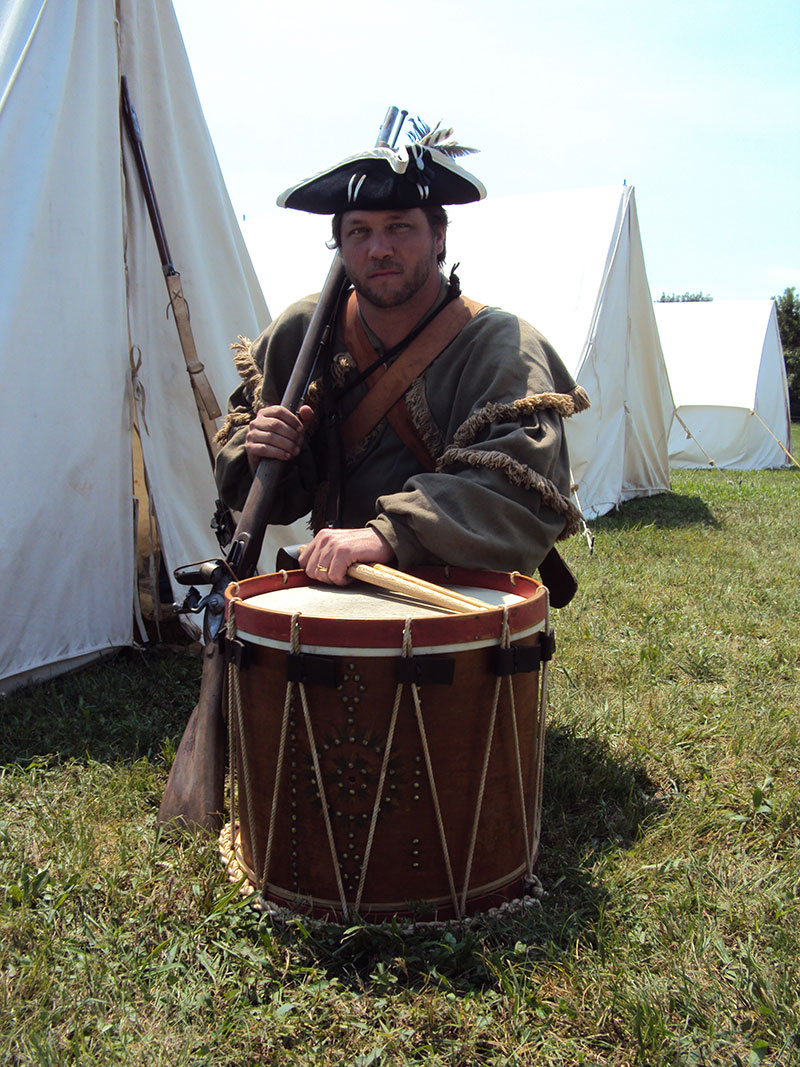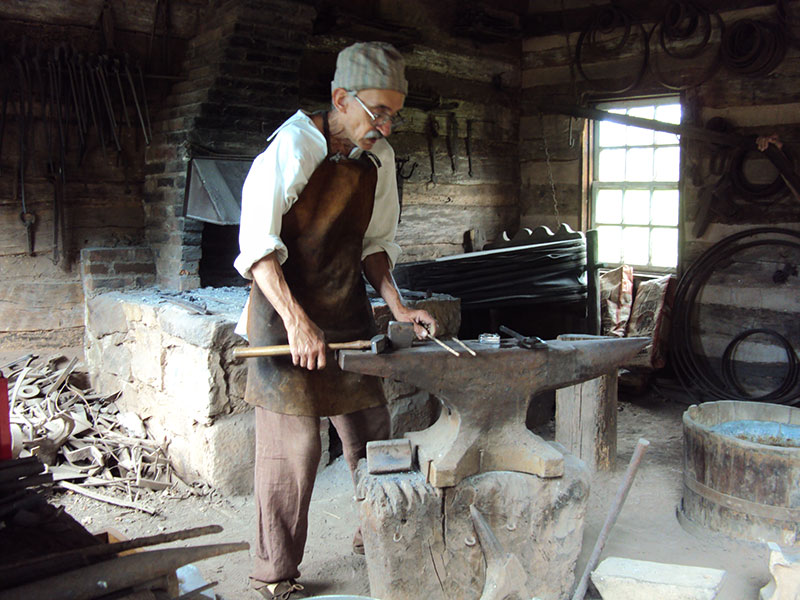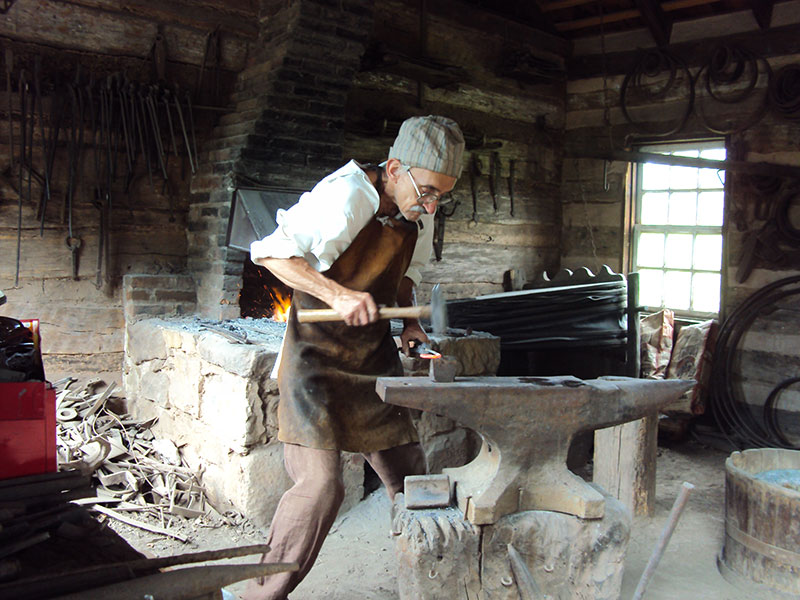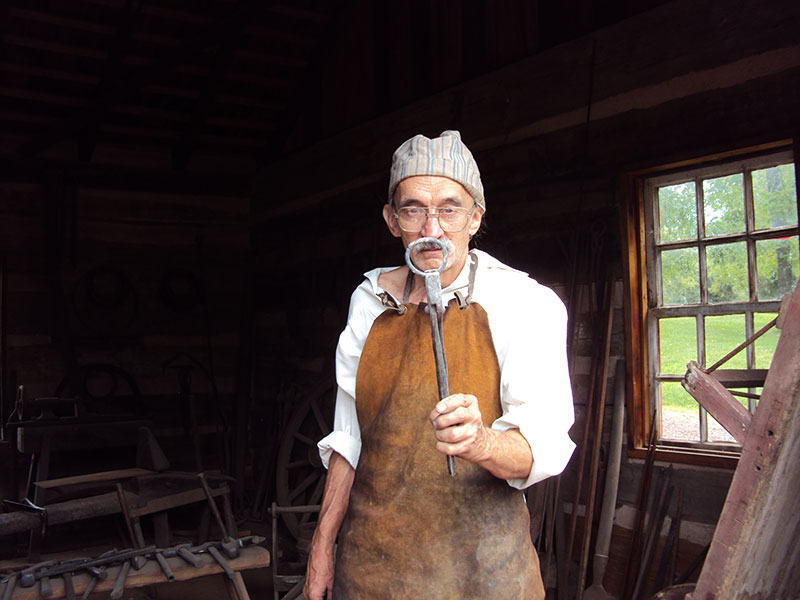Maker: Abner D. StevensCirca: Late 1790’s-Early 1800’s Dimensions: 14.5”(h) x 16.5”(dia.)
As hostilities with England became a not too distant memory, the inhabitants of the new American Nation now had the task of rebuilding not only the physical damage caused by no less than seven years of a very personal war, but had an entire economy to repair as well. Born in a small New England town in 1770, a young and industrious Abner D. Stevens started making drums at his shop in Hancock, Massachusetts, in 1794 as his principle means of income.
While this drum has no maker’s label, it is possibly the work of Abner Stevens. Most of Stevens drums have a distinctive brass tack pattern with a folk-art floral painting incorporated within, centered on the vent hole. Although the tack patterns continued to morph over the years, the basic finger print or theme remains consistent. There are at least three different basic tack patterns attributed to “labeled” A.D. Stevens’s drums and at least one drum with no tacking at all.
This drum has a very primitive, folk-art look especially in the tacking and painting. As Stevens progressed as a drum maker, so did the designs. The circles in the tacking of this drum are much closer to the vent hole than later known versions with the painted floral designs anchored on the tacks. With later versions (as early as my dated 1811 drum), the tack circles are pushed out and an ivory vent-hole grommet was added and more elaborate art was applied to the design. The vent hole on this drum is unreinforced with no evidence that a grommet was ever in place. Each tack of the two circles emits a ray the color of mustard while centered between each tack is a “tulip” design in green; appearing to give the impression of enlarging the over-all design.
The shell is made of a fairly thick, single ply of maple, as is usually found in Steven’s work and retains most of the original varnish. The outside edge of the scarf joint is not only reinforced by the solid vertical row of the brass tacks of the maker’s mark, but of a single, vertical row of small iron nails intermingled amongst the tacks. As Steven’s skill as a drum maker increased, he eliminated the small nails and seemed to rely only on the tacks and natural glue. The nails, as well as the primitive design and unreinforced vent, seem to indicate a very early example of this master drum maker’s work. The over-all height of the shell is 14.5” high, which is a shorter height than most of the later known examples.
These pictures were taken at the Daniel Boone Homestead in Berks County, PA at a Revolutionary War encampment.
The internal glue rings are simple hand cut maple strips, each nailed and butt-jointed together, top and bottom. Interestingly, there is a “double” glue ring on the top side of the shell. There is no evidence of any structural damage to the shell; one can only speculate that this drum was initially reinforced at this point to help create strength where it was needed from being suspended from a drum sling while on the march.
The counter hoops also retain most of the original red sponged paint, indicating some sort of military use, very likely militia. Measuring 1 ½” high and 5/16” in thickness, they seem more than adequate to stand up to the rigors of serious military use. While there are no snare gates cut into the lower hoop, hand-carved snare beds are present on the shell. There is also no evidence that a mechanical snare adjuster was ever present on the drum. The snares were simply run between the lower head and the counter hoop, using the tension provided to stay in place and in this case, anchored with a leather snare butt.
Since the over-all integrity of this maple shell is amongst some of the best in antique drums, it was decided to make this one a player. Along with a good cleaning, ten new leather ears, gut snares, leather snare butt, rope washer, and cotton rope was all that was required to bring this 200 hundred year old tub back to playing condition. The two hide skins were in pretty good shape, so a little moisture and some old fashioned love was all that was needed. A two inch wrought iron ring was hammered out by a blacksmith and attached with black leather lacing tied off to the ropes for use as a traditional attachment for the drum sling.
Abner Stevens died in 1842 and was succeeded in the drum making business by his son, Moseley W. Stevens (M.W. Stevens). In 1809, Abner moved his drum making business from Hancock to Pittsfield, MA. The War of 1812 reportedly made him somewhat of a wealthy man as militia companies as well as the Federal Government contracted with him to provide drums to help repel the British invaders and their Indian allies.
With all the clues present in the making of this drum, it’s a fair assessment that it was more than likely from the Hancock shop and a very early offering from one of the better drum makers of the early Republic. A passage found in J.E.A. Smith’s “History of Pittsfield, Mass,” simply states that: “……Mr. Stevens made a good rattling instrument.” With the restored “player condition” of this 200 year old tub, it would seem obvious to even a casual observer hearing it played today that this was a very accurate statement.
From Lancaster County, PA……..Thoughts from the shop.
Brian Hill

